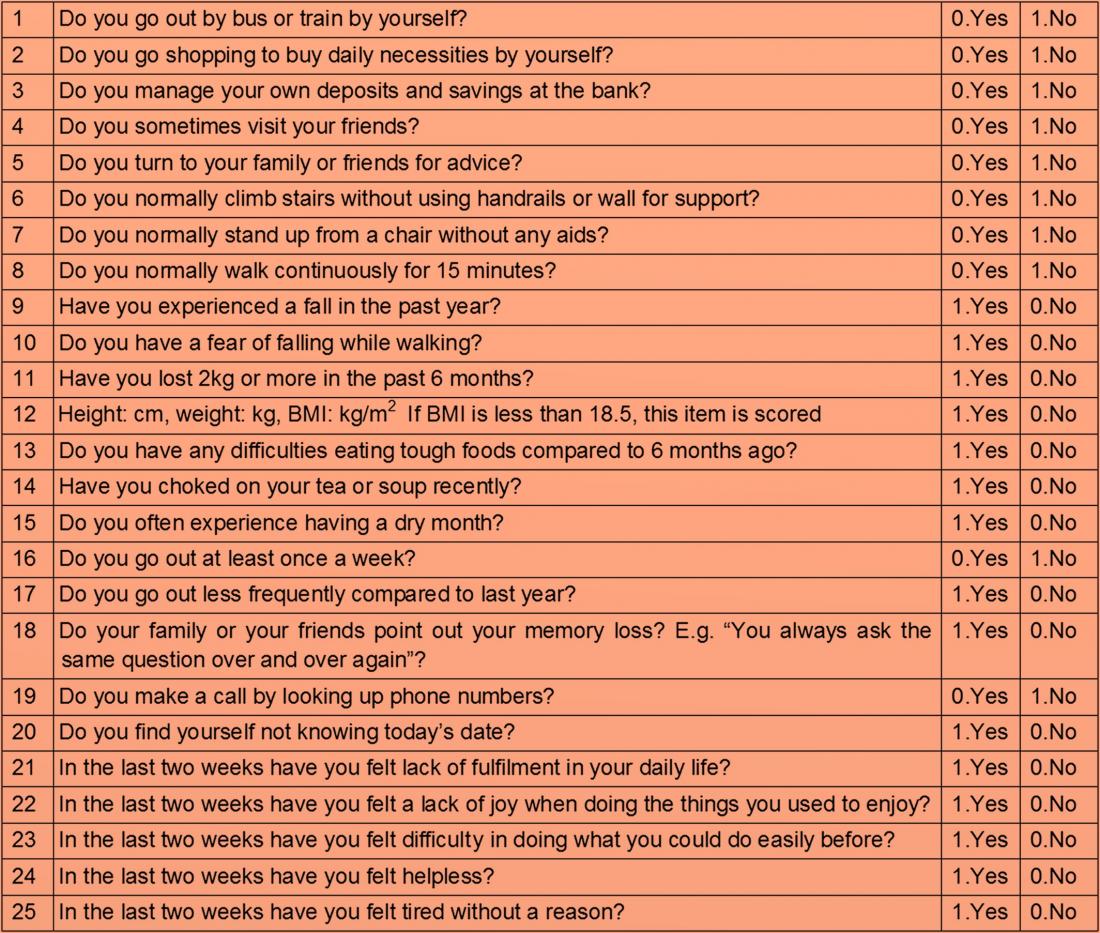A simple self-reporting yes/no survey consisting of 25 questions that is used as a screening tool to identify frailty in the Japanese long-term care insurance system.
Transcatheter aortic valve replacement (TAVI) is a minimally invasive alternative to open-chest surgery in treating severe aortic stenosis, or a narrowing of the aortic valve - the heart’s primary valve for regulating blood flow to the body’s main artery.
As the procedure is increasing in an aging society, one major risk factor for death and disability following TAVI is frailty. The Kihon Checklist (KCL) is a 25 item, yes/no survey that helps screen patients for a variety of purposes, yet no clinical studies have focused on frailty calculated by the KCL in the TAVI cohort.
In a study published in the Journal of Cardiology, researchers from the Osaka City University Graduate School of Medicine investigated the 3-year prognostic impact of frailty evaluated by the KCL in patients who underwent TAVI and found that the estimated 3-year mortality rate was significantly higher in individuals who ranked high on the checklist.
“The KCL was originally developed to identify elderly individuals who were at risk of requiring support within the Japanese long-term care insurance system, independent of the concept of frailty”, states lead author Yusuke Kure. There are several clinical scores that can be used to evaluate frailty status, but according to the research team, they have some shortcomings. For example, the Short Physical Performance Battery (SPPB) reflects a patient’s lower-extremity muscle function but is difficult to acquire a score in daily practice because not all the candidates can perform sufficient examinations required for calculations. “The availability of the KCL which is correlated to a number of frailty phenotypes, along with other surgical risk scores, would be useful in identifying patients who are too frail to benefit from TAVI”, states corresponding author Tsukasa Okai.
According to the study, which drew from a pool of 280 patients who underwent TAVI, a ROC curve analysis of the assessment of frailty calculated from the KCL was comparable to the SPPB (p=0.91) and the Clinical Frailty Scale (p=0.15). A multivariate COX regression analysis showed that the total KCL score, presence of diabetes mellitus, and presence of liver disease were independent factors for total mortality at 3 years after TAVI. In addition, Kaplan-Meier analysis of the total score of the KCL, in which 0-8 points were classified as no frailty, 9-12 points as mild frailty, and 12-25 points as frail, showed that total mortality at 3 years after TAVI was significantly higher in the frail group.
“Although the KCL is a self-reporting survey, our results indicate it may be possible to make a more objective evaluation by assessing various indicators related to frailty”, states Dr. Yasuhiro Izumiya, “and the KCL could help in identifying optimal candidates for TAVI.”
###
We are Osaka City University - the oldest research university in Osaka. With 9 undergraduate faculties and 11 graduate schools all dedicated to making urban life better, energy cleaner, and people healthier and happier, we have won numerous awards and have produced 2 Nobel laureates. For more information, please visit our website at https://www.upc-osaka.ac.jp/new-univ/en-research/



